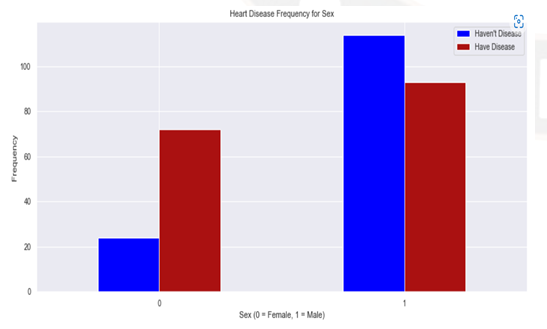Multi Disease Prediction Using HDO Machine Learning Approach
Main Article Content
Abstract
Several machine learning approaches can do predictive analytics on vast volumes of information in various sectors. Predictive analytics in health care is a challenging task. Still, it may ultimately aid physicians in making timely judgments about the health and handling of patients based on vast amounts of information. Breast cancer, diabetes, and heart-related disorders cause numerous fatalities worldwide, yet most of these decreases are attributable to an absence of appropriate screenings. The lack of remedial substructure and a short doctor-to-population proportion contribute to the issue above. Following WHO recommendations, physicians' ratio to affected persons should be in some range; India's doctor-to-public proportion indicates a doctor scarcity. Heart, cancer, and diabetes-related disorders pose a significant danger to humanity if not detected initially. Thus, early detection and identification of these disorders may save many lives. Using classification methods based on machine learning, the focus of this effort is to anticipate dangerous illnesses. Diabetes, heart disease, and breast cancer are discussed in this study. To make this effort easy and accessible to the general community, a web application for therapeutic tests has been developed that use machine learning to create illness predictions. In this study, a web application is created for illness prediction that employs the notion of machine learning-based forecasts for illnesses such as breast cancer, diabetes, and cardiovascular sickness.
Article Details
References
U. R. Acharya, H. Fujita, S. L. Oh, Y. Hagiwara, J. H. Tan, & M. Adam, “Application of deep convolutional neural network for automated detection of myocardial infarction using ECG signals”, Information Sciences, Vol. 415–416, pp. 190–198, 2017.
S. Ahmed, K. Y. Choi, J. J. Lee, B. C. Kim, G. R. Kwon, K. H. Lee, & H. Y. Jung, “Ensembles of Patch-Based Classifiers for Diagnosis of Alzheimer Diseases”, IEEE Access, Vol. 7, pp. 73373–73383, 2019.
A. Al-Zebari, & A. Sengur, “Performance Comparison of Machine Learning Techniques on Diabetes Disease Detection”, In: Proc of 1st International Informatics and Software Engineering Conference: Innovative Technologies for Digital Transformation, IISEC, pp. 2–5, 2019.
P. Bagga, & R. Hans, “Applications of mobile agents in healthcare domain: A literature survey”, International Journal of Grid and Distributed Computing, Vol. 8, No. 5, pp. 55–72, 2015.
R. Chitra, V. Anuja Kumari, “Classification Of Diabetes Disease Using Support Vector Machine”, International Journal of Engineering Research and Applications, Vol. 3, No. 2, pp. 1797–1801, 2013.
G. Cinarer & B. G. Emiroglu, “Classificatin of Brain Tumors by Machine Learning Algorithms”, In: Proc of 3rd International Symposium on Multidisciplinary Studies and Innovative Technologies, ISMSIT, 2019.
L. Meng, S. Ding, N. Zhang, & J. Zhang, “Research of stacked denoising sparse autoencoder”, Neural Computing and Applications, Vol. 30, No. 7, pp. 2083–2100, 2018.
I. M. Najim Adeen, A. M., Abdulazeez, & D. Q. Zeebaree, “Systematic review of unsupervised genomic clustering algorithms techniques for high dimensional datasets”, Technology Reports of Kansai University, Vol. 62, No. 3, pp. 355–374, 2020.
S. M. Naqi, M. Sharif, & A. Jaffar, “Lung nodule detection and classification based on geometric fit in parametric form and deep learning”, Neural Computing and Applications, Vol. 32, No. 9, pp. 4629–4647, 2020.
L. Rajabion, A. A. Shaltooki, M. Taghikhah, A. Ghasemi, & A. Badfar, “Healthcare big data processing mechanisms: The role of cloud computing”, International Journal of Information Management, Vol. 49, pp. 271–289, 2019.
M. Sameti, R. K. Ward, J. Morgan-Parkes and B. Palcic, “Image Feature Extraction in the Last Screening Mammograms Prior to Detection of Breast Cancer”, IEEE Journal of Selected Topics in Signal Processing, Vol. 3, No. 1, pp. 46-52, 2009.
J. Mohammad and M. H. Bayati Chaleshtari, “Using dragonfly algorithm for optimization of orthotropic infinite plates with a quasi-triangular cut-out”, European Journal of Mechanics A/Solids, Vol. 66, pp.1-14, 2017.
A. M. Fathollahi-Fard, M. Hajiaghaei-Keshteli, and R. Tavakkoli-Moghaddam, “Red deer algorithm (RDA): a new nature-inspired meta-heuristic”, Soft Computing, Vol. 24, pp. 14637-14665, 2020.
H. Saleh, S. F. Abd-el ghany, H. Alyami, and W. Alosaimi, “Predicting Breast Cancer Based on Optimized Deep Learning Approach”, Computational Intelligence and Neuroscience, Vo. 8, pp. 1-11, 2022.
G. Huang, Z. Liu, L. van der Maaten, Q. Kilian Weinberger, “Densely Connected Convolutional Networks”, Computer Vision and Pattern Recognition, 2016.
S. Vijayarani, & S. Dhayanand, “Data Mining Classification Algorithms for Kidney Disease Prediction”, International Journal on Cybernetics & Informatics, Vol. 4, No. 4, pp. 13–25, 2015.
H. Tjahjadi, K. Ramli, “Noninvasive blood pressure classification based on photo plethysmography using K-nearest neighbors algorithm: A feasibility study”, Information, Vol. 11, No. 2, pp. 1–18, 2020.
D. Pedrozo, F. Barajas, A. Estupiñán, K.L. Cristiano, D.A. Triana, “Data analysis for a set of university student lists using the k-Nearest Neighbors machine learning method”, Phys. Conf. Ser., Vol. 1514, No. 1, pp. 1–8, 2020.
A. Assegie, P.S. Nair, “Handwritten digits recognition with decision tree classification: a machine learning approach”, Int. J. Electr. Comput. Eng., Vol. 9, No. 5, pp. 1–4, 2019.

